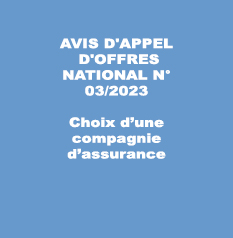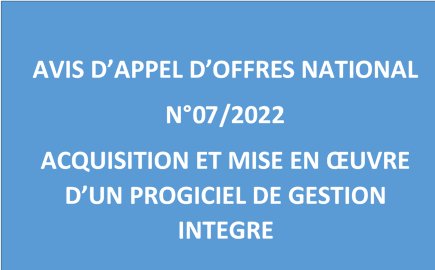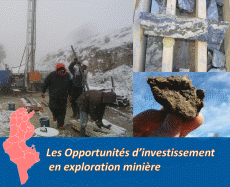| Programme annuel & rapport de suivi technique |
-

Rapport d'activités 2023
-

Programmes Techniques 2024
|
| Géocatalogue |

|
| Appels d'Offres |
-

ACQUISITION DES TICKETS RESTAURANT POUR LE PERSONNEL DE L’ONM
-

CHOIX D’UNE COMPAGNIE D’ASSURANCE
-

ACQUISITION ET MISE EN ŒUVRE D’UN PROGICIEL DE GESTION INTEGRE
|
|
Investir en Tunisie |


|
|
|
|
|
::
Documentation and Editions
>>
Research library
|
| |
|
[
Search by author
]
[
Search keyword
]
[
Search by index
]
[
Search by category
]
|
title of the reference :
|
Sequence stratigraphy in coastal environments
|
|
Publication Date:
|
1993
|
|
Author :
|
Blondel T.J.A., Gorin Georges, Jan Du Chene Roger
|
|
Catalogue type :
|
Livre
|
|
Catalogue reference :
|
Vol.18 (GBR) Spec. publ. Int. Ass. Sedimentol. Vol.18 Sequence stratigraphy in coastal environments sedimentology and palynofacies of the Miocene in central Tunisia. Continental, coastal and shelf near-shore sediments of the Hajeb el Aïoun Group were deposited on the innermost Tunisian shelf during lower to middle Miocene transgressive flooding maxima (Burdigalian to early Serravallian). Only the most marine unit can be precisely dated by nannofossils and foraminifera, whereas the age of the others units is indirectly attributed by vertical and lateral correlations. A thorough sedimentological study of numerous field sections, locally complemented by palynofacies analyses, led to the establishment of a detailed sedimentological and palaeoenvironmental model, which can be interpreted in terms of sequence stratigraphy. On the Tunisian shelf, the stratigraphic signature of these deposits is comparable to that recorded on other comtemporaneous continental shelves. In coastal environments of the lower to middle Miocene of Tunisia, sequence boundaries and transgressive surfaces are well marked by macroscopical sedimentological features. In such environments, transgressive surfaces often overprint the underlying sequence boundary. Maximum flooding surfaces in tidal flat, estuarine and lagoonal environments are more difficult to identify in the field, but can often be singled out by palynofacies analysis because they coincide with a significant increase in abundance and diversity of dinoflagellate cysts. In the field, transgressive systems tracts are characterized by fining-up and deepening-up parasequences, while highstand systems tracts are characterized by coarsening-up and shallowing-up parasequences. Increasingly shallower water depths during late highstand deposits are often emphasized by a decrease in dinoflagellate cyst abundance and diversity. bibliogr. faune foraminifère ; plancton ; nanofossile ; biostratigraphie ; matière organique ; paléoenvironnement ; Miocène ; formation oued el Hajel ; formation Aïn Grab ; formation Mahmoud ; formation Messiouta ; palynofaciès ; groupe Hajeb el Aïoun ; formation Béglia ; stratigraphie séquentielle ; Tunisie ; Tunisie Centrale ; axe nord sud ; île Kasserine ; J. Zaouia ; J. Khrechem el Artsouma ; J. Bou Gobrine ; J. Gatrana ; J. Boudinar Gorin Georges Jan Du Chene Roger Blondel T.J.A. Roches Sédmentaires, Sédimentologie
|
|
Indexation decimale :
|
Roches Sédmentaires, Sédimentologie
|
|
Keywords :
|
faune foraminifère ; plancton ; nanofossile ; biostratigraphie ; matière organique ; paléoenvironnement ; Miocène ; formation oued el Hajel ; formation Aïn Grab ; formation Mahmoud ; formation Messiouta ; palynofaciès ; groupe Hajeb el Aïoun ; formation Béglia ; stratigraphie séquentielle ; Tunisie ; Tunisie Centrale ; axe nord sud ; île Kasserine ; J. Zaouia ; J. Khrechem el Artsouma ; J. Bou Gobrine ; J. Gatrana ; J. Boudinar
|
|
Summary :
|
Continental, coastal and shelf near-shore sediments of the Hajeb el Aïoun Group were deposited on the innermost Tunisian shelf during lower to middle Miocene transgressive flooding maxima (Burdigalian to early Serravallian). Only the most marine unit can be precisely dated by nannofossils and foraminifera, whereas the age of the others units is indirectly attributed by vertical and lateral correlations. A thorough sedimentological study of numerous field sections, locally complemented by palynofacies analyses, led to the establishment of a detailed sedimentological and palaeoenvironmental model, which can be interpreted in terms of sequence stratigraphy. On the Tunisian shelf, the stratigraphic signature of these deposits is comparable to that recorded on other comtemporaneous continental shelves. In coastal environments of the lower to middle Miocene of Tunisia, sequence boundaries and transgressive surfaces are well marked by macroscopical sedimentological features. In such environments, transgressive surfaces often overprint the underlying sequence boundary. Maximum flooding surfaces in tidal flat, estuarine and lagoonal environments are more difficult to identify in the field, but can often be singled out by palynofacies analysis because they coincide with a significant increase in abundance and diversity of dinoflagellate cysts. In the field, transgressive systems tracts are characterized by fining-up and deepening-up parasequences, while highstand systems tracts are characterized by coarsening-up and shallowing-up parasequences. Increasingly shallower water depths during late highstand deposits are often emphasized by a decrease in dinoflagellate cyst abundance and diversity.
|
|
Exemplaries :
|
TU1726
|
|
|
|
|
|
|
|



